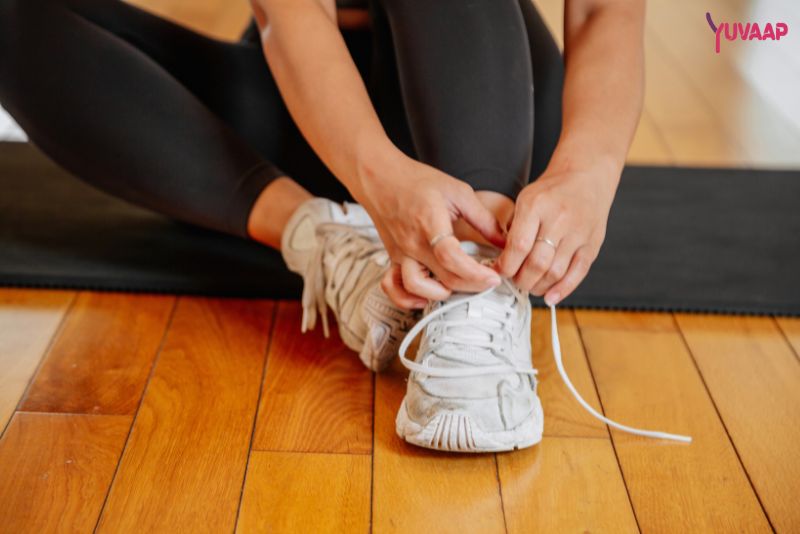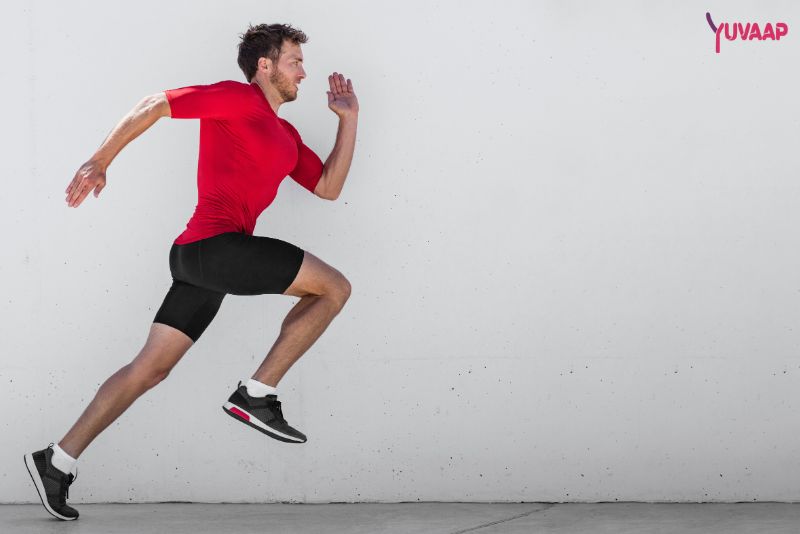Losing weight can feel like an uphill battle, especially when you’ve been trying your best without seeing results. If you’re feeling frustrated and discouraged, know that you’re not alone. Many people, particularly those struggling with obesity, face similar challenges. However, the good news is that with the right approach and mindset, you can achieve your weight loss goals. This blog is here to guide you through the best gym workouts for weight loss. We’ll cover simple, effective exercises and offer tips to help you succeed. Whether you’re a beginner or have some gym experience, this guide is designed to be easy to understand and follow.
Understanding Weight Loss

Before diving into the best gym workouts for weight loss, it’s important to understand how weight loss works. At its core, weight loss happens when your body uses more energy than it takes in. This balance can be achieved through a combination of nutritious eating and regular exercise. Here’s a simple breakdown:
1- Listening to Your Body: To support weight loss, it’s important to eat when you’re hungry and choose nutrient-dense foods that satisfy your body’s needs.
2- Metabolism: Your metabolism is the process by which your body converts what you eat and drink into energy. A higher metabolism means your body burns more calories at rest. Building muscle through strength training can boost your metabolism because muscle tissue burns more calories than fat tissue.
3- Combining Exercise with a Healthy Diet: Exercise is crucial for building muscle and improving overall health, but it should be paired with mindful eating to be effective. Enjoying a variety of nutrient-dense foods like vegetables, fruits, pulses, nuts, seeds, and whole grains can support your well-being. It’s also helpful to reduce your intake of processed foods and sugary drinks, focusing instead on foods that nourish your body and mind.
4- Holistic Wellness: Achieving weight loss isn’t just about physical exercise and diet. It’s also about maintaining mental and emotional health. Practices like yoga and meditation can reduce stress and improve your mental well-being, making it easier to stick to your weight loss plan. Incorporating yoga into your routine can also support weight loss. Learn about 10 effective yoga poses for weight loss.
- Yoga: This practice can enhance your flexibility, improve your breathing, and reduce stress said by Harvard Health . While not as intense as some gym workouts, yoga can support your weight loss journey by promoting a healthy mind and body connection.
- Meditation: Regular meditation can help manage stress, which is often a significant barrier to weight loss. By taking a few minutes each day to meditate, you can improve your focus, reduce anxiety, and make healthier choices.
- Diet and Nutrition: What you eat plays a significant role in weight loss. A balanced diet that includes a variety of nutrients can help you feel full and satisfied while providing the energy you need for your workouts.
Preparing for Your Gym Workouts

Getting ready for your gym workouts involves more than just lacing up your sneakers. Preparation is key to ensuring you make the most out of your time at the gym and stay motivated throughout your journey. Here’s how to get started:
Setting Realistic Goals:
- Begin by setting achievable goals. For instance, instead of aiming to lose 20 pounds in a month, start with a goal to lose 1-2 pounds per week. This approach is healthier and more sustainable.
- Write down your goals and track your progress. Keeping a journal can help you stay focused and motivated.
Creating a 4-Week Weight Loss Plan:
- Plan your workouts. A 4-week weight loss plan can give you a structured approach, making it easier to stick to your routine. Your plan should include a mix of cardio, strength training, and flexibility exercises.
- Include rest days in your plan. Rest is crucial for recovery and helps prevent burnout.
Consistency and Tracking Progress:
- Consistency is key to seeing results. Try to work out at the same time each day to build a routine.
- Use apps or fitness trackers to monitor your progress. Seeing improvements, no matter how small, can boost your motivation.
Mental Preparation:
- Approach your workouts with a positive mindset. Remind yourself why you’re doing this and visualize your success.
- Incorporate practices like yoga and meditation into your routine to help manage stress and keep your mental health in check.
By setting realistic goals and preparing both physically and mentally, you’ll be in a better position to achieve your weight loss goals. If you’re new to the gym, it’s essential to start with a proper guide to ensure you’re doing the exercises correctly and safely. Check out this comprehensive guide on how to workout in the gym for beginners for detailed instructions
Best Gym Workouts for Weight Loss
When it comes to losing weight at the gym, a combination of cardio, strength training, and high-intensity interval training (HIIT) can be highly effective. Here are some of the best gym workouts for weight loss:
Cardio Workouts

Cardio exercises are great for burning calories and improving heart health. Here are some effective cardio workouts:
Treadmill:
- Walking or running on a treadmill is a simple and effective way to burn calories. Start with a brisk walk and gradually increase your speed to a jog or run.
- Try interval training by alternating between high-intensity sprints and slower-paced walking. This can help burn more calories in a shorter amount of time.
Elliptical Trainer:
- The elliptical is a low-impact option that provides a full-body workout. It’s easier on the joints compared to running.
- Use the machine’s built-in programs to vary the intensity and keep your workouts challenging.
Cycling:
- Whether using a stationary bike or participating in a spin class, cycling is excellent for burning calories.
- Try different resistance levels and speeds to keep your workouts interesting and effective.
For targeted exercises to help reduce belly fat, you can explore these 10 best exercises to reduce belly fat.
Strength Training

Strength training is essential for building muscle, which in turn helps increase your metabolism. Here are some key strength training exercises:
Squats:
- Squats target multiple muscle groups, including your glutes, quads, and hamstrings. They’re great for building lower body strength.
- Start with bodyweight squats and progress to using weights as you get stronger.
Deadlifts:
- Deadlifts are effective for building overall body strength. They work your back, glutes, and hamstrings.
- Focus on proper form to avoid injury. Begin with lighter weights and gradually increase as you become more comfortable.
Bench Press:
- The bench press targets your chest, shoulders, and triceps. It’s a great exercise for upper body strength.
- Use a spotter if you’re lifting heavy weights to ensure safety.
To focus on your core and reduce belly fat, try this 10-minute abs workout video.
High-Intensity Interval Training (HIIT)

HIIT involves short bursts of intense exercise followed by rest periods. It’s highly effective for burning calories and improving cardiovascular fitness.
Sample HIIT Routine:
- Warm up with 5-10 minutes of light cardio (like jogging or jumping jacks).
- Perform 30 seconds of high-intensity exercise (like sprinting, burpees, or jump squats) followed by 30 seconds of rest. Repeat for 15-20 minutes.
- Cool down with 5-10 minutes of stretching or light cardio.
For an effective full-body HIIT workout you can do without any equipment, check out this 15-minute video.
Benefits of HIIT:
- HIIT workouts are time-efficient, making them ideal for busy schedules.
- They can continue to burn calories even after your workout is finished, thanks to the afterburn effect (excess post-exercise oxygen consumption, or EPOC).
Incorporating HIIT into Your Routine:
- Start with one or two HIIT sessions per week and gradually increase as your fitness improves.
- Combine HIIT with other forms of exercise like cardio and strength training for a well-rounded workout plan. For a fun and intense full-body workout, you can do at home, watch this 20-minute video.
By incorporating these best gym workouts for weight loss into your routine, you’ll be on your way to achieving your fitness goals. Remember, it’s not just about working out harder but working out smarter. Make sure to listen to your body and give yourself time to rest and recover.
Creating a 4-Week Weight Loss Plan
Having a structured plan can significantly increase your chances of success. A well-balanced 4-week weight loss plan includes a mix of cardio, strength training, and HIIT workouts, along with proper rest and recovery. Here’s a sample plan to get you started:
Week 1-2: Building the Foundation
Monday:
- Cardio: 30 minutes on the treadmill (brisk walk or light jog)
- Strength Training: Full-body workout (light weights)
Tuesday:
- HIIT: 20 minutes (1-minute sprints followed by 1-minute walking)
Wednesday:
- Rest or yoga for flexibility and relaxation
Thursday:
- Cardio: 30 minutes on the elliptical
- Strength Training: Upper body workout (light weights)
Friday:
- HIIT: 20 minutes (cycling with varying resistance)
Saturday:
- Cardio: 30 minutes of cycling or rowing
Sunday:
- Rest or meditation to reduce stress
- Week 3-4: Increasing Intensity
Adjustments for Different Fitness Levels
- Beginners: Start with lower intensity and gradually increase as you build stamina and strength.
- Intermediate: Push yourself harder during HIIT and strength training sessions.
- Advanced: Increase workout durations and weights as you progress.
Additional Tips for Weight Loss at the Gym
Warming Up and Cooling Down:
- Always start your workout with a 5-10 minute warm-up to prepare your body and reduce the risk of injury.
- Cool down with 5-10 minutes of stretching to improve flexibility and aid recovery.
Staying Hydrated:
- Drink plenty of water before, during, and after your workouts. Hydration is crucial for optimal performance and recovery.
Maintaining Proper Nutrition:
- Fuel your body with a balanced diet rich in lean proteins, healthy fats, and complex carbohydrates. This will provide the energy needed for your workouts and support muscle recovery.
Using Gym Equipment Correctly and Safely:
- Learn the proper form for exercises to prevent injury. Don’t hesitate to ask a trainer for guidance if you’re unsure about how to use a machine or perform an exercise.
Listening to Your Body:
- Pay attention to how your body feels. If you experience pain (not to be confused with the discomfort of a good workout), it’s important to rest and seek medical advice if necessary.
Common Mistakes to Avoid
Overtraining:
- Working out too hard without adequate rest can lead to burnout and injury. Ensure you have rest days and listen to your body’s signals.
Ignoring Diet:
- Exercise alone isn’t enough for weight loss. A poor diet can undermine your efforts. Focus on eating nutritious foods that support your weight loss goals.
Not Tracking Progress:
- Failing to track your progress can make it difficult to see improvements, which can be discouraging. Use a journal or fitness app to monitor your workouts, diet, and changes in weight or measurements.
Setting Unrealistic Goals:
- Expecting rapid results can lead to disappointment. Set achievable goals and celebrate small victories along the way.
Neglecting Mental and Emotional Health:
- Stress and emotional well-being play a significant role in weight loss. Incorporate stress-reducing activities like yoga and meditation into your routine to maintain a balanced approach.
How to Stick with an Active Routine
Staying consistent with an active routine can be challenging, especially when life gets busy or motivation wanes. Here are some practical tips to help you stay committed to your fitness journey:
Set Clear, Achievable Goals:
- Break down your long-term goals into smaller, manageable milestones. For instance, aim to work out three times a week initially, then gradually increase the frequency.
- Use the SMART criteria (Specific, Measurable, Achievable, Relevant, Time-bound) to set your goals.
Find Activities You Enjoy:
- Choose exercises that you find enjoyable and fun. If you dread going to the gym, try different activities like swimming, dancing, or hiking.
- Mixing up your routine can also prevent boredom and keep you engaged.
Schedule Your Workouts:
- Treat your workouts like important appointments. Schedule them into your calendar and stick to them.
- Finding a consistent time of day that works best for you can help make exercise a habit.
Join a Class or Find a Workout Buddy:
- Group classes or having a workout partner can provide motivation and accountability. It’s harder to skip a workout when someone else is counting on you.
- Social interactions can make workouts more enjoyable and less of a chore.
Track Your Progress:
- Keeping a workout journal or using a fitness app can help you see your progress over time. Focus on how you feel and the improvements in your energy levels, strength, and mood, rather than just numbers on a scale. Tracking can be a great motivator when you see how far you’ve come.
- Celebrate your achievements, no matter how small. Recognizing your progress can boost your confidence and motivation.
Be Flexible and Kind to Yourself:
- Life happens, and sometimes you might miss a workout. Don’t be too hard on yourself. What’s important is to get back on track as soon as possible.
- Listen to your body’s signals and adjust your routine if needed. Overworking yourself can lead to burnout and injury. Tune into your body’s hunger cues and rest needs, ensuring you’re taking a balanced approach to fitness and wellness.
Reward Yourself:
- Set up a reward system for meeting your fitness goals. This could be something simple like a relaxing bath, a new workout outfit, or a healthy treat.
- Rewards can provide positive reinforcement and make the process more enjoyable.
Incorporate Holistic Wellness Practices:
- Include activities like yoga and meditation to support your mental and emotional health. A balanced approach can make it easier to stick with your routine.
- Proper nutrition, adequate sleep, and stress management are also crucial components of a sustainable active lifestyle.
Embarking on a weight loss journey, especially when struggling with obesity, can be daunting. However, by understanding the fundamentals of weight loss and incorporating the best gym workouts for weight loss, you can set yourself up for success. Preparing adequately, following a structured 4-week weight loss plan, and incorporating holistic wellness practices can help you achieve your goals safely and effectively.
Remember, consistency is key. Stay committed to your active routine, celebrate your progress, and be kind to yourself along the way. Your journey to better health and well-being is not just about the physical changes but also about improving your overall quality of life. Take one step at a time, and soon you’ll see the positive changes in both your body and mind.
FAQs
References
https://www.health.harvard.edu/staying-healthy/yoga-benefits-beyond-the-mat
https://www.ncbi.nlm.nih.gov/pmc/articles/PMC9891140/

Mr. Sunil Navale is a distinguished figure in the world of fitness, fueled by an unwavering passion for well-being. He is trained at the FISAF Singapore, a globally renowned organisation in the fitness industry Read More


